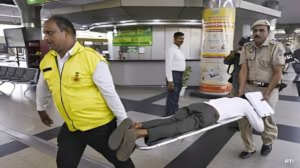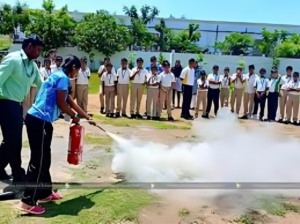DELHI LAUNCHES MASSIVE EARTHQUAKE DRILLS ACROSS 55 SITES TO BOOST READINESS
Introduction
Delhi authorities today rolled out emergency drills at fifty-five key locations across the city to check and improve earthquake preparedness. The aim is to test early warning systems, evacuation plans, and public awareness. This large-scale exercise reflects growing concern over seismic risks in the National Capital Region and underlines a proactive, user-first approach to safety.
Purpose of the Drills
The main goals of this citywide exercise include:
- Testing sirens and public alert channels to ensure quick warnings.
- Practising safe evacuation routes in office buildings, schools, and residential blocks.
- Training emergency response teams in search, rescue, and first aid.
- Evaluating coordination between multiple agencies—police, fire services, NDMA, and volunteers.
Real-life example: Last year’s tremor near Uttarkashi highlighted gaps in people’s response. Today’s drill aims to close those gaps through hands-on practice.

Key Components Tested
- Early Warning Systems
- Public sirens checked at street corners and markets.
- Mobile alerts tested for timely delivery.
- Building Evacuation
- Stairwell and exit route clarity in commercial towers.
- Special drills for schools, with teachers guiding children to muster points.
- Emergency Response Teams
- Firefighters timed on search and rescue inside mock collapsed structures.
- First-aid stations set up to treat simulated injuries.
- Public Awareness Campaign
- Pamphlets and announcements on “Drop-Cover-Hold” mantra.
- Volunteers demonstrating “duck under table” technique.
These elements together help identify weaknesses quickly, so improvements can be made before a real quake.
Community Engagement and Training
Authorities encouraged residents to join voluntary earthquake safety workshops. Highlights include:
- Hands-on practice: Simple drills at home—turn off gas, unplug appliances.
- Online modules: Short videos on recognising structural hazards.
- Feedback loops: Surveys after drills to gather suggestions from participants.
Storytelling element: Mrs. Sharma, a resident of East Delhi, shared how last year’s tremor left her family confused. After today’s workshop, she said, “Now I know exactly where to go and what to grab first.”

Challenges and Lessons Learned
Despite its scale, the exercise revealed some issues:
- Warning delays in certain residential pockets due to network congestion.
- Congestion at primary exits in older buildings lacking multiple staircases.
- Communication gaps between agencies needing unified radio channels.
Action plan: City officials will upgrade siren networks, mandate periodic multi-exit drills in old complexes, and install interoperable radios for seamless coordination.
Why This Matters
Delhi sits near a moderate to high seismic zone. An unexpected quake could cause major damage without proper readiness. Regular drills:
- Build muscle-memory response among citizens.
- Help authorities spot blind spots in planning.
- Strengthen trust between government and community.
By keeping user safety first and following best practices, the city not only complies with national disaster norms but also creates a culture of resilience.
Conclusion
Today’s emergency drills at 55 locations mark a significant step toward a safer, more prepared Delhi. By testing systems, training people, and learning from real-time feedback, the city bolsters its defences against potential earthquakes. Continuous practice, community engagement, and technological upgrades will be key to turning these drills into lifesaving actions when it truly counts.
#TRANDING